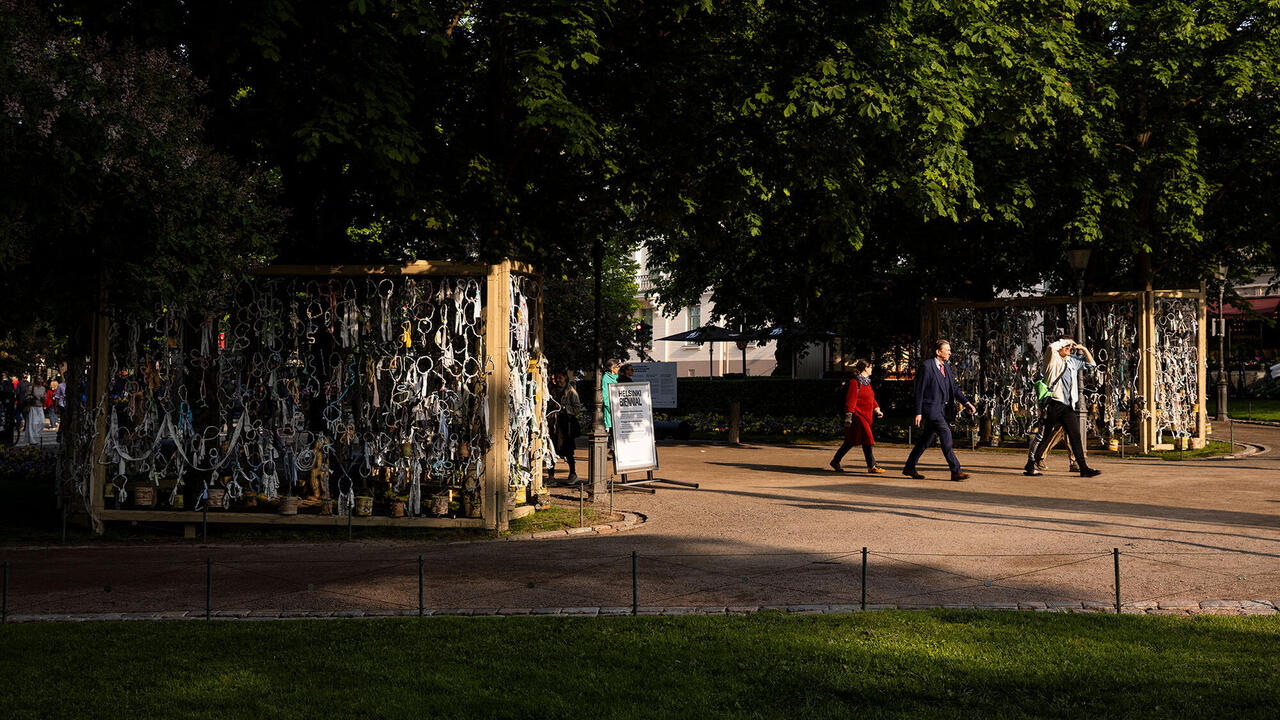2002 California Bienial
Orange County Museum of Art, USA
Orange County Museum of Art, USA

When the biennial bubble bursts, as must soon happen, will it be with a life-threatening meltdown or a Greenspanian soft landing? Collectively, are we sweating through a biennial malaise that is too hot, too cold or, in Goldilocks style, just right? Pundits and village idiots line up on both sides of the debate but, interestingly, the Southland of Los Angeles, that palm-fringed coast fattened on defence contracts and tech spending, has revived a micro-economic forecasting project all of its own, figuring wisely that the whole is only as healthy as the sum of its local parts.
When the Orange County Museum of Art decided this year to revisit the tradition (going back to 1984!) of the venerable Newport Harbor Art Museum's California biennials, curator and acting director Elizabeth Armstrong argued in her essay for the need not to survey but to 'take the pulse' of Californian art. Well, the blood sample is back from the lab, and apart from an outbreak of prickly dread in some cases the prognosis seems bearable.
Given that every town with a dogcatcher can argue a valid case for a two-yearly visual art-stravaganza, Newport Beach has to be one of the most satisfying venues possible, an irrigated and primped beach town, beloved of plastic surgeons, co-eds and insolvency lawyers. The Orange County Museum itself nestles beside the palms and fountains of the iconic 1960s Fashion Island shopping centre, flocks of white Lexus SUVs and Mercedes grazing in the parking lots.
But the museum itself is low-rise and inconspicuous, so visitors were guided in by Roman de Salvo's Accretion Balloon (2001-2) hovering like a car dealer's advertising inflatable, a helium-filled doppelgänger of a land-bound concrete and flint sculpture that languished in the museum's sculpture garden. Later in the show only a tether remained, coiled next to the plinth, raising the possibility that the airborne work might have given in to inflationary pressures of its own.
This biennial had a remit to cover California statewide, but with just 12 artists included there were clearly drastic exclusions. Nevertheless the line-up was strong, with abundant and disquieting gags. Stephanie Syjuco's Comparative Morphologies (2001) takes Internet-published images of tech gear - power lines, jacks and cables - and arranges them as though they were 19th-century botanical drawings. Orange County local Tom LaDuke knows the region's freeways inside out: his almost opaque enamel paintings, such as Crush (2001) and FWY (2001), are striated close up with the filaments of telephone wires, hypertrophied advertising balloons, refinery smokestacks in a mixed haze of particulates. He is working out a California plein-air approach from the car pool lane of the 405.
More recently LaDuke's work has looped back to his own body. Private Property (2001) is a two-part sculpture where bald and scorched hillsides sit on separate plinths, each one supporting a high-tension electricity pylon. The forms of the hillsides are cast from the artist's head and the length of his pelvis, and spidery lengths of wire stretch between the unevenly puckered earth surfaces.
Charlie White's 'Understanding Joshua' series (2000) bloomed in the Newport Beach climate. The manipulated and elaborately cinematic photographs are a consummate response to the waxed, tucked and augmented world of southern California parties, where blondes and brunettes exist on spatially separate planes and Joshua, his naked, sunken-chested alien protagonist, whales around stricken with social insecurities. In Sherri's Living Room Joshua is left to be consoled by a naked and matronly woman in a pine laminate den over his lack of tumescence.
Elizabeth Armstrong has spent enough time in San Diego to draw in work that is acutely conscious of labour inequalities and the Mexico border. Yoshua Okon's three-channel video work of Los Angeles security guards Parking Lot Lotus (2001) invites sedentary minimum-wage security guards to an outdoor meditation class on yoga mats in their car parks, backed up with a manifesto from the 'Los Angeles Security Guard Meditation Movement', a group supporting collective meditation sessions for LA's compromised and overweight car park workforce.
Evan Holloway may by now be the best known of the artists invited to participate, but the exhibition reprised some of his most jaw-dropping work and his musical preoccupations. There was Upsidedown White Rauschenberg (1999), a pared-down and cleaned up fibreglass version of the combine, but also Left-handed Guitarist (1998), a white life-size cast of a Kurt Cobain-style left-hander overhanging a lift shaft-like perspective drawing. Less familiar was Reverse Strung Piano (2000), an ink-on-paper drawing of a piano restrung to transpose the bass and treble sections, accompanied by a Chopin piano concerto played in this back-to-front style.
For a non-jock audience, though, Joe Sola's Saint Henry Composition (2001) may have been the biggest wake-up call of all. Sola spent three days with the Saint Henry's Redskins football team in Ohio filming their notoriously psychotic training. There are sequences with the artist standing on the 50-yard line, inviting different team members to tackle him. From a mike on Sola's panting chest you get an exaggerated sense of apprehension as he is caught, hit and pounded into the grass by 18-year-old testosterone-pumping linebackers.
As a bloodcell-pounding art medical this may have been excessive, but it looks a lot like the future.
















